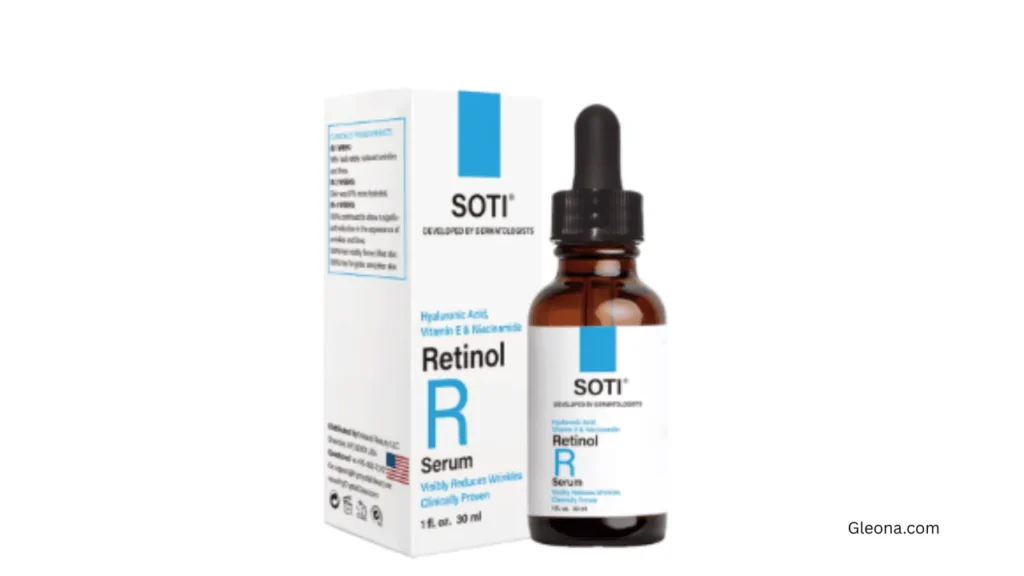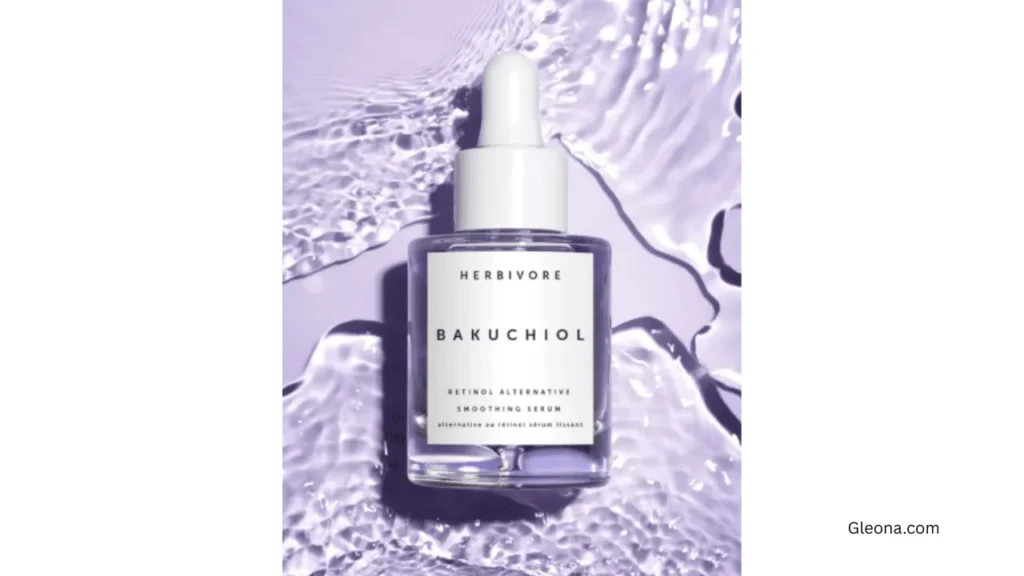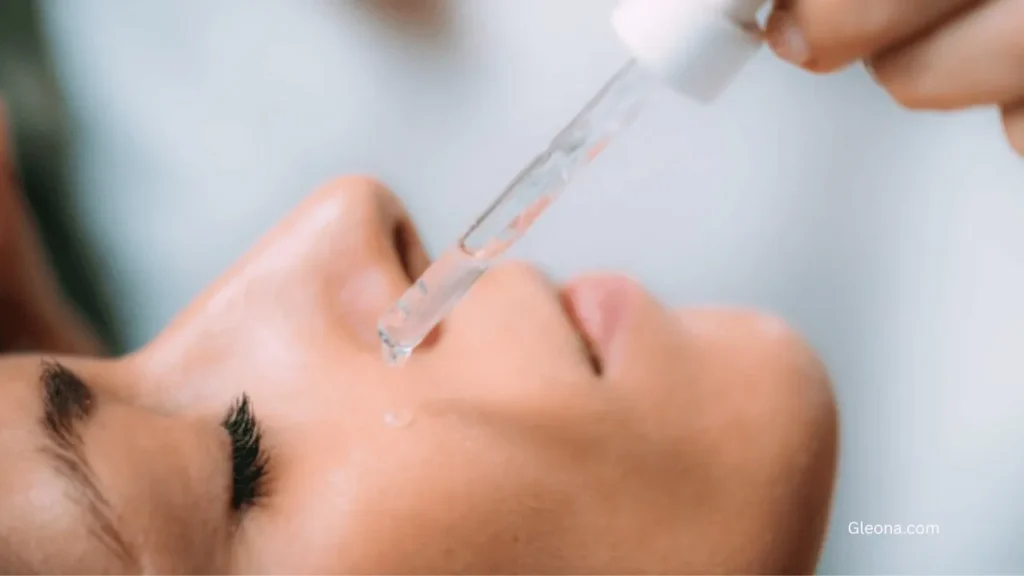Introduce the skincare debate between Retinol and Bakuchiol both praised for anti-aging and glow-boosting effects. Mention that while Retinol is a proven powerhouse, Bakuchiol offers a gentler, plant-based alternative. Tease that this article will guide readers through key differences, benefits, and how to use each effectively for a healthy, radiant complexion.
Discover Retinol vs. Bakuchiol: Which One Should You Use? Learn a 5-step daily routine for glowing skin and find the best fit for your skin type.
What Are Retinol and Bakuchiol?
Understanding Retinol

Retinol is a vitamin A derivative widely used in skincare for its powerful anti-aging and cell-renewing properties. It works by speeding up skin cell turnover, which helps reduce fine lines, wrinkles, acne, and uneven skin tone. Dermatologists often recommend Retinol because it boosts collagen production the key to firmer, smoother skin.
However, Retinol can sometimes cause dryness, redness, or irritation, especially for beginners or those with sensitive skin. It’s best introduced gradually and used at night with plenty of moisturizer and daily sunscreen.
Understanding Bakuchiol

Bakuchiol is a natural, plant-based alternative to Retinol, derived from the Babchi plant (Psoralea corylifolia). It delivers similar benefits such as improving skin texture, reducing wrinkles, and boosting collagen but without the harsh side effects.
Unlike Retinol, Bakuchiol is gentle enough for sensitive skin and can be used both day and night. It also has strong antioxidant and anti-inflammatory properties, helping to soothe the skin while promoting a healthy glow.
Retinol vs. Bakuchiol: Key Differences You Should Know
Retinol vs. Bakuchiol: Quick Comparison Chart
| Feature | Retinol | Bakuchiol |
|---|---|---|
| Source / Origin | Synthetic derivative of Vitamin A | Natural extract from the Babchi (Psoralea corylifolia) plant |
| Effectiveness | Strong, fast-acting anti-aging results | Gentle, gradual improvement over time |
| Best For | Normal to oily skin; experienced skincare users | Sensitive or dry skin; beginners; natural skincare lovers |
| Skin Irritation | May cause dryness, redness, or peeling | Generally non-irritating and soothing |
| Time of Use | Night only (sunlight can deactivate it) | Day and night safe |
| Results Timeline | Noticeable results in 4–6 weeks | Visible results in 8–12 weeks |
| Compatibility | Avoid mixing with AHAs, BHAs, or Vitamin C | Safe to layer with most skincare ingredients |
| Pregnancy Safe? | Not recommended | Yes, generally considered safe |
| Texture & Feel | Strong, active formulation | Lightweight, gentle texture |
| Overall Goal | Fast cell renewal and collagen boost | Natural anti-aging and soothing benefits |
Benefits of Retinol and Bakuchiol

Both Retinol and Bakuchiol are powerful ingredients that help your skin look smoother, brighter, and more youthful. But each offers its own set of unique advantages depending on your skin’s needs and tolerance level.
Benefits of Retinol
- Reduces Fine Lines & Wrinkles
Retinol boosts collagen production, helping to smooth out fine lines and soften wrinkles for a more youthful appearance. - Improves Skin Texture & Tone
It increases cell turnover, revealing fresher, healthier skin while fading dark spots and rough patches. - Fights Acne & Breakouts
Retinol helps unclog pores, regulate oil, and reduce acne-causing bacteria making it ideal for acne-prone skin. - Brightens Dull Skin
By shedding dead skin cells, it gives your complexion a radiant glow and a smoother finish. - Backed by Decades of Research
Dermatologists have long recognized Retinol as one of the most effective and clinically proven anti-aging ingredients.
Benefits of Bakuchiol
- Gentle on Sensitive Skin
Bakuchiol delivers similar results to Retinol but without irritation, redness, or flaking perfect for sensitive or dry skin types. - Natural & Plant-Derived
Extracted from the Babchi plant, it’s a clean, vegan alternative that aligns with natural and cruelty-free skincare routines. - Improves Skin Firmness & Elasticity
It stimulates collagen and elastin production, helping the skin stay firm, plump, and youthful. - Evens Skin Tone
Bakuchiol reduces dark spots and discoloration, leaving a balanced and luminous complexion. - Safe for Daytime & Pregnancy
Unlike Retinol, Bakuchiol doesn’t increase sun sensitivity and is considered safe for daytime use and pregnancy.
How to Choose Between Retinol and Bakuchiol

Choosing between Retinol and Bakuchiol depends on your skin type, lifestyle, and skincare goals. Both deliver smoother, youthful-looking skin, but one might fit your needs better than the other. Here’s how to decide which is right for you
Quick Self-Assessment: Which One Fits You Best?
| Your Skin Concern / Preference | Choose Retinol If… | Choose Bakuchiol If… |
|---|---|---|
| Main Goal | You want fast results and visible anti-aging benefits. | You prefer a natural, gentle approach to youthful skin. |
| Skin Type | Normal to oily; not easily irritated. | Sensitive, dry, or reactive skin. |
| Experience Level | You’ve used active ingredients before. | You’re new to skincare actives or starting slow. |
| Lifestyle | You mostly apply skincare at night and use sunscreen daily. | You want a product safe for both day and night use. |
| Product Preference | You don’t mind stronger formulas with potential peeling. | You prefer plant-based or pregnancy-safe skincare. |
Dermatologist-Style Tips for Choosing Wisely
- Start Slow and Build Tolerance
- If you’re new to actives, begin with Bakuchiol first.
- Once your skin adjusts, you can introduce Retinol gradually (2–3 nights a week).
- Use Both Strategically
- Combine them in your routine: Bakuchiol in the morning (gentle antioxidant protection) and Retinol at night (cell renewal).
- This method gives you the best of both worlds results and balance.
- Watch for Skin Reactions
- If you experience redness, peeling, or sensitivity, reduce frequency or switch temporarily to Bakuchiol until your skin recovers.
- Always Pair with Moisturizer & SPF
- Both ingredients work best with hydration and sun protection.
- SPF is essential when using Retinol since it increases sun sensitivity.
Step-by-Step Tutorial How to Use Them in Your Skincare Routine
Whether you’re new to actives or looking to refine your routine, learning how to use Retinol or Bakuchiol correctly is key to getting visible, glowing results without irritation. Follow this simple 5-step daily skincare routine (beginner-friendly) to maximize their benefits safely.
Morning Routine (Bakuchiol Users)
Bakuchiol is gentle enough for daytime use, offering antioxidant protection and smoother skin throughout the day.
Step 1: Cleanser
Use a mild, hydrating cleanser to remove impurities and prep your skin for treatment.
Step 2: Toner
Apply an alcohol-free toner to balance your skin’s pH and enhance absorption.
Step 3: Bakuchiol Serum
Apply 2–3 drops of Bakuchiol serum evenly to your face and neck. It helps firm, brighten, and protect your skin naturally.
Step 4: Moisturizer
Seal in hydration with a light, non-comedogenic moisturizer to maintain smooth, supple skin.
Step 5: Sunscreen (SPF 30+)
Always finish your morning routine with a broad-spectrum sunscreen, even if you’re indoors. Bakuchiol enhances your skin’s renewal, so protection is vital.
Night Routine (Retinol Users)
Retinol is more potent and should only be used at night to avoid sun sensitivity.
Step 1: Gentle Cleanser
Wash your face with a non-exfoliating, soothing cleanser to remove makeup and dirt.
Step 2: Toner (Optional)
If your skin tolerates it, apply a hydrating toner to prep your skin. Avoid exfoliating toners when using Retinol.
Step 3: Retinol Application
Use a pea-sized amount of Retinol serum or cream. Apply it evenly across your face, avoiding the eye and mouth areas.
Start with 2–3 nights a week, then increase frequency as your skin adapts.
Step 4: Moisturizer
After 10–15 minutes, apply a rich, soothing moisturizer to minimize dryness and irritation.
Step 5: (Next Morning)
Always apply sunscreen the next day Retinol makes your skin more sensitive to UV rays.
Common Mistakes to Avoid

Even the best skincare ingredients can cause problems when used incorrectly. Whether you’re using Retinol or Bakuchiol, avoiding these common mistakes will help you get glowing, healthy skin without irritation.
1. Starting Too Strong, Too Soon
Many beginners jump straight into high-strength Retinol or daily Bakuchiol use.
Fix: Start slow use Retinol 2–3 nights per week and Bakuchiol daily only after patch-testing. Gradual introduction helps your skin adjust smoothly.
2. Skipping Sunscreen During the Day
Retinol increases sun sensitivity, making your skin more prone to damage and pigmentation.
Fix: Always apply broad-spectrum SPF 30 or higher every morning even on cloudy days. Bakuchiol users should also wear SPF to maintain results.
3. Not Moisturizing Enough
Retinol can cause dryness and flakiness, especially for beginners.
Fix: Follow up with a hydrating moisturizer rich in ceramides, hyaluronic acid, or squalane to protect your skin barrier.
4. Mixing Actives Incorrectly
Layering Retinol with strong acids (AHA, BHA) or Vitamin C in the same routine can trigger irritation.
Fix: Use Vitamin C in the morning and Retinol at night. Bakuchiol, however, can safely be paired with most ingredients.
5. Expecting Instant Results
Retinol and Bakuchiol both need time and consistency.
Fix: Be patient most users notice visible improvements after 6–12 weeks of regular use.
6. Ignoring Skin Reactions
If your skin feels overly tight, red, or flaky, it’s a sign you’re overdoing it.
Fix: Take a short break, moisturize, and restart with lower frequency or switch to Bakuchiol temporarily for a gentler experience.
7. Not Patch Testing First
Introducing any active ingredient without testing can lead to unexpected irritation.
Fix: Apply a small amount behind your ear or on your jawline for 24–48 hours before using it all over your face.
Expert Tips for Beginners
Starting with Retinol or Bakuchiol can feel overwhelming but with the right approach, you can enjoy glowing, youthful skin without irritation. Here are some dermatologist-approved tips to help beginners get the most out of these powerful ingredients.
1. Start Low and Go Slow
Always begin with a low concentration of Retinol (0.2%–0.5%) or a mild Bakuchiol serum.
Use them 2–3 times a week and gradually increase frequency as your skin builds tolerance.
This slow approach helps prevent dryness and redness while letting your skin adjust naturally.
2. Apply Retinol at Night Only
Retinol breaks down in sunlight, which reduces its effectiveness and increases sun sensitivity.
Always use Retinol in your nighttime routine and apply SPF 30+ every morning to protect your results.
Bakuchiol, however, can be used both day and night making it great for consistent care.
3. Layer Wisely
Apply active ingredients on clean, dry skin, then follow with a hydrating moisturizer.
Use the “sandwich method” for sensitive skin: apply moisturizer → Retinol → another thin layer of moisturizer.
This reduces irritation while keeping your skin barrier strong.
4. Combine With Barrier-Boosting Ingredients
Support your skin’s health by pairing Retinol or Bakuchiol with soothing, hydrating ingredients such as:
- Niacinamide – strengthens your skin barrier
- Hyaluronic Acid – boosts hydration
- Ceramides – repair dryness and lock in moisture
5. Be Patient and Consistent
Visible improvements usually appear in 6–12 weeks of regular use.
Don’t quit early results take time, especially with Bakuchiol’s gentle nature.
Consistency is key to achieving lasting, radiant skin.
6. Avoid Over-Exfoliation
Combining Retinol or Bakuchiol with exfoliating acids (like AHA/BHA) can overstrip your skin.
Limit exfoliation to 1–2 times a week, and avoid using them on the same nights as Retinol.
7. Listen to Your Skin
If your skin feels irritated, flaky, or tight take a break, moisturize, and restart slowly.
Everyone’s tolerance is different, so adjust your routine based on how your skin reacts.
Conclusion
Both Retinol and Bakuchiol are powerful skincare ingredients that can help you achieve smoother, firmer, and more radiant skin. The best choice depends on your skin type, sensitivity, and goals.
- Choose Retinol if you want fast, research-backed results for anti-aging, fine lines, and acne and your skin can tolerate stronger actives.
- Choose Bakuchiol if you prefer a gentle, natural, and irritation-free alternative that’s safe for daily and daytime use.
Remember, great skin doesn’t happen overnight it’s about consistency, patience, and protection. Introduce one ingredient at a time, follow a simple routine, and don’t skip your sunscreen.
For more about Skin Care Tips Please visit Gleona.com.
FAQs
1. Can I use Retinol and Bakuchiol together?
Yes, you can! Many dermatologists suggest using Bakuchiol in the morning and Retinol at night. This combination helps maximize anti-aging results while minimizing irritation. Always introduce them slowly and use plenty of moisturizer and SPF.
2. Is Bakuchiol as effective as Retinol?
Bakuchiol offers similar benefits to Retinol like improving wrinkles, texture, and firmness but it works more gently and gradually. While Retinol delivers faster results, Bakuchiol is better suited for sensitive or reactive skin.
3. Can I use Retinol or Bakuchiol if I have acne?
Yes! Retinol is especially effective for acne-prone skin because it unclogs pores and speeds up cell renewal. Bakuchiol also helps reduce inflammation and post-acne marks, making it a great natural option for mild acne or sensitive skin.
4. Is Bakuchiol safe during pregnancy or breastfeeding?
Yes. Bakuchiol is generally considered safe for pregnancy and breastfeeding, unlike Retinol, which should be avoided during these periods. Always consult your dermatologist before adding any new active ingredients.
5. How long does it take to see results from Retinol or Bakuchiol?
With consistent use, Retinol users typically see results in 4–6 weeks, while Bakuchiol users may notice gradual improvements within 8–12 weeks. Results depend on your skin type, routine, and product strength.


